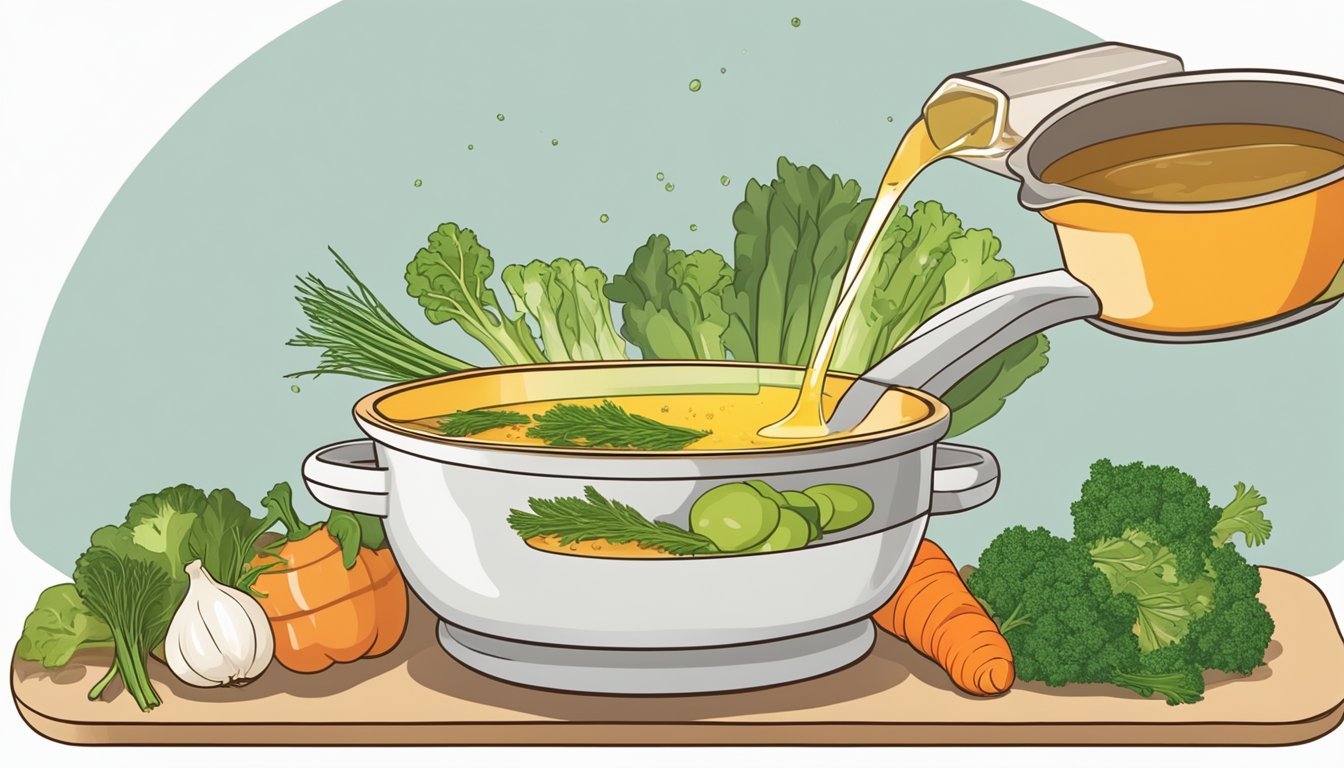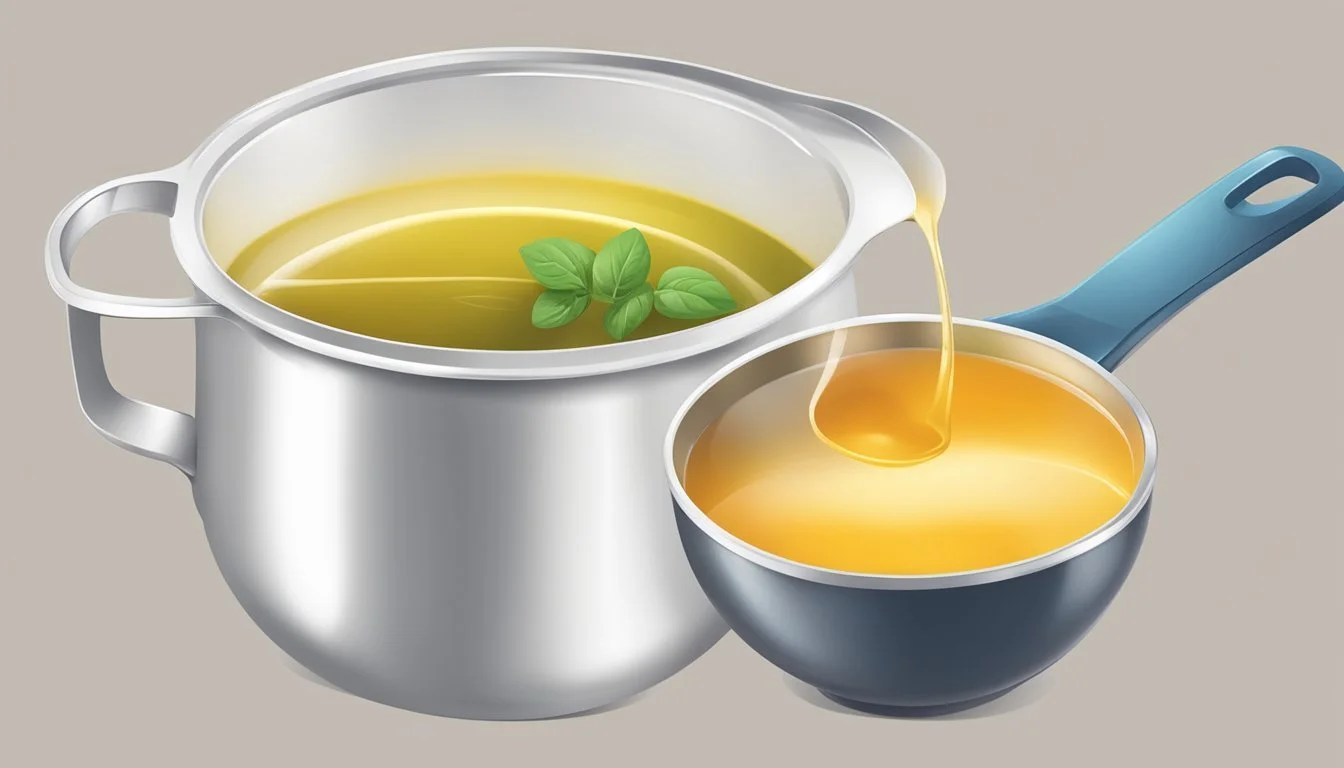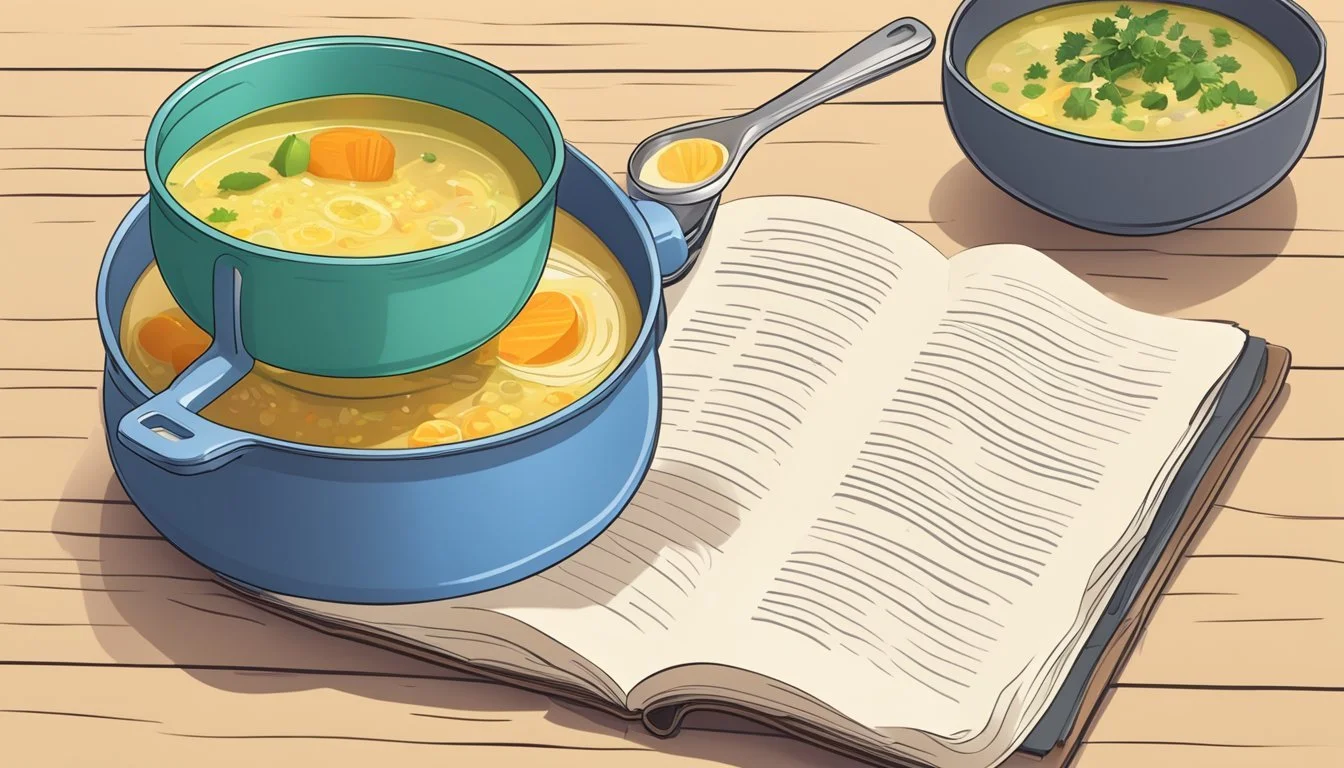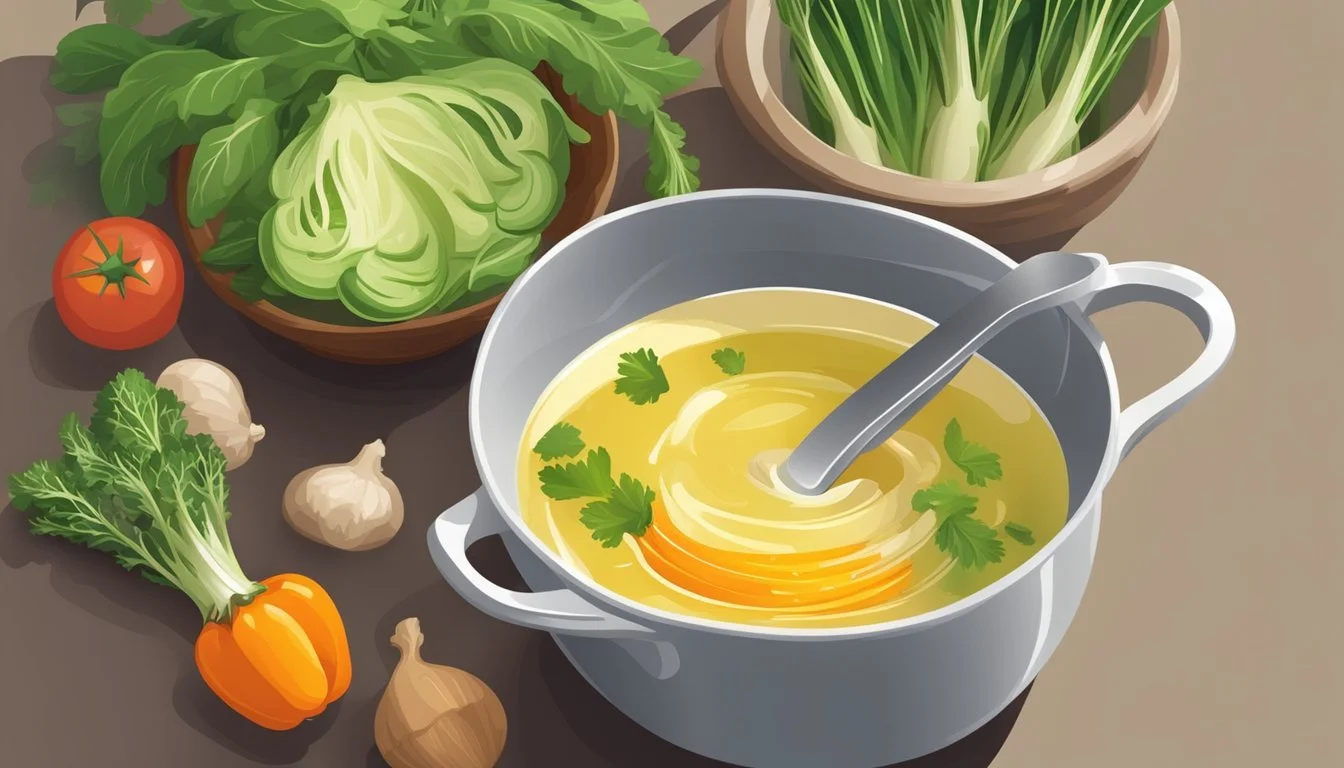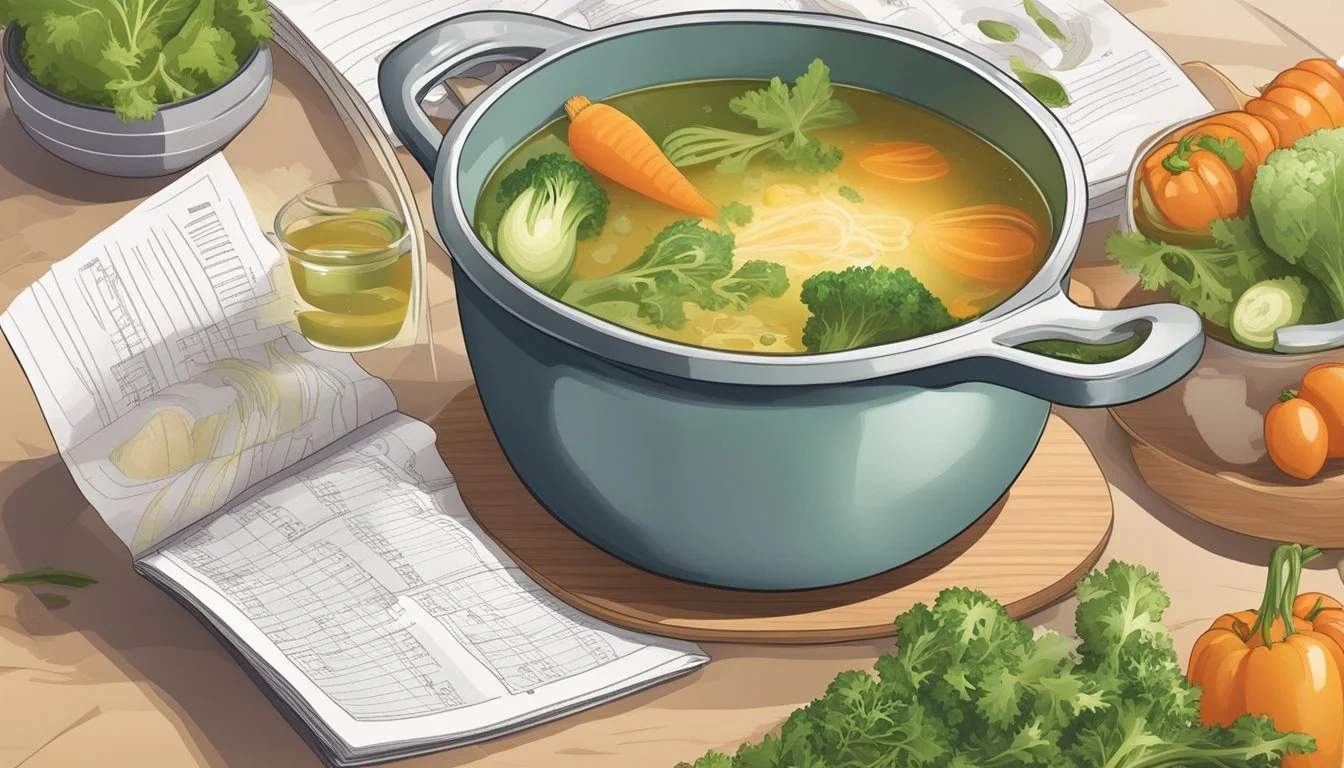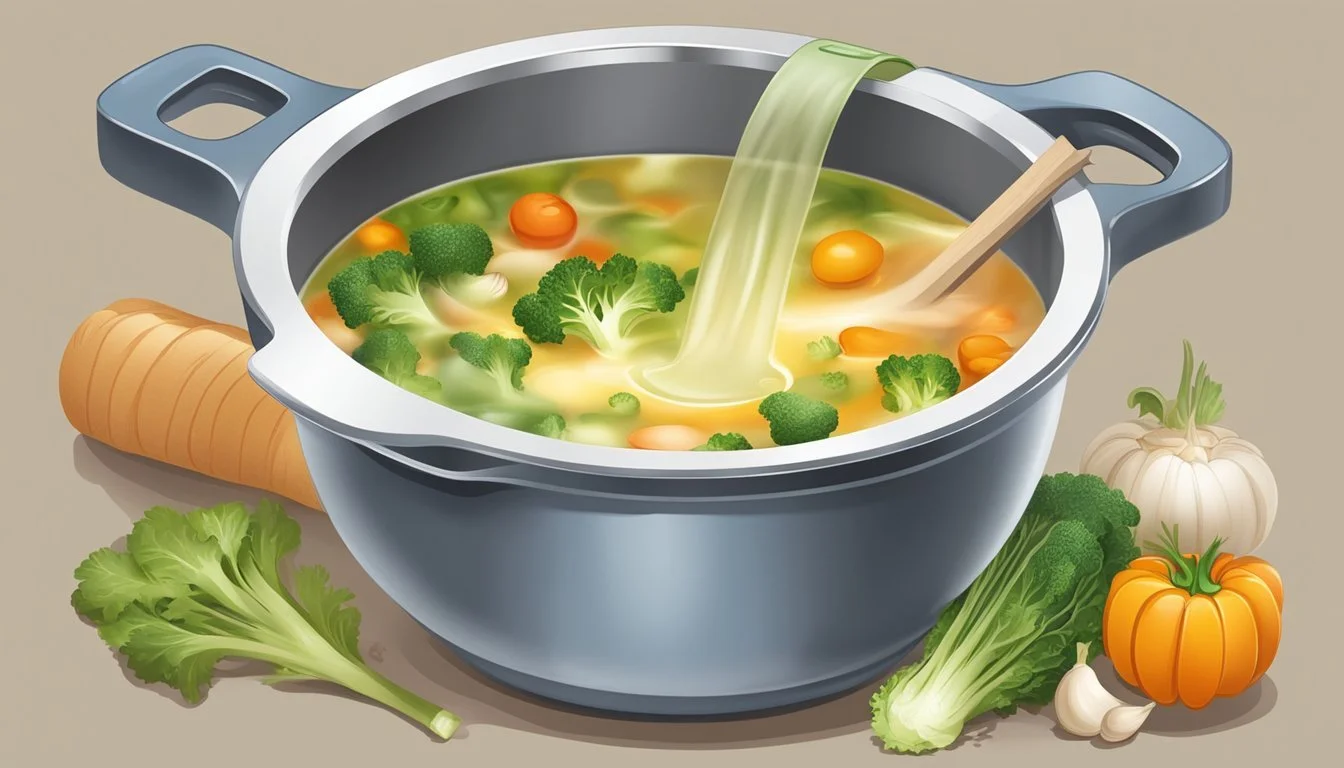How to Measure the Right Amount of Broth for Soup
Perfect Quantities Every Time
Measuring the right amount of broth is essential when preparing soup. The quantity of broth used can greatly influence the taste, consistency, and nutritional value of the soup. A fundamental understanding of broth-to-ingredient ratios ensures that the soup serves as a satisfying meal with well-balanced flavors and proper texture. Recipes typically specify the amount required; however, the essence of a good soup lies in adjusting these measurements to cater to personal preferences and dietary requirements.
To achieve the desired outcome, it's important to consider the type of soup being made. Hearty, chunky soups may require less broth for a thicker consistency, while broths and clear soups rely on a greater volume of liquid for a lighter final product. The broth serves as the foundation, carrying flavors and marrying the different components together. It is, therefore, important to not only measure accurately but also to taste and adjust seasonings as the soup cooks.
When cooking, one can use standard measurement tools like measuring cups and spoons to ensure precision. For instance, some recipes may suggest starting with a certain amount of broth per cup of solid ingredients, then adjusting as necessary based on the cooking process and personal preferences. Understanding how to measure and adjust broth can elevate a simple soup to a memorable dish.
Understanding Soup Basics
When crafting a soup, the amount of broth used can make the difference between a flavorful, well-balanced bowl and a dish that falls flat. Broth serves as the fundamental liquid element in soups, and its measurement is key to achieving the desired consistency, whether the goal is a brothy or a hearty soup.
Types of Soups and Their Foundations
Soup Foundations
Clear Soups: These are typically made with a clear broth or stock, emphasizing a light, delicate flavor. Examples are chicken noodle soup and vegetable broth.
Thick Soups: These soups are heartier and may use a base of cream, puréed vegetables, or a roux for thickness. Common examples include chowders, bisques, and cream of tomato soup.
Protein-Enriched Soups: Often a main dish due to their high protein content, they include ingredients such as meats, legumes, or tofu to add both texture and nutrients.
Key Ingredients
Vegetables: They impart essential vitamins and give body to soups. Carrots, celery, and onions are common choices for creating a flavor base.
Proteins: Options such as chicken, beef, tofu, or beans not only contribute nutrition but also create a more satisfying soup.
Seasoning: Salt, pepper, herbs, and spices are essential for bringing out the flavors and can be adjusted according to the type of soup and personal taste.
Essential Cooking Techniques for Soups
Techniques to Master:
Sautéing Vegetables: Sautéing onions and other vegetables in oil or butter is a pivotal step to create a flavor foundation for any soup.
Simmering: Slow cooking at a low temperature is necessary to allow the flavors to meld and intensify, creating depth in both broth-based and hearty soups.
Consistency & Flavor Tips:
One should simmer soups for an adequate time, often at least 30 minutes, to ensure vegetables and proteins are cooked through and flavors are well-developed.
For a smooth texture, one can blend the soup, but when a chunkier soup is desired, blending should be limited or skipped entirely.
Seasonings should be adjusted gradually, with regular tasting, to ensure a balanced flavor profile for the final dish.
By understanding the different types of soups and the foundational cooking techniques, one can measure the right amount of broth and craft soups that are both nourishing and delicious, perfectly suited as a healthy appetizer or a robust main dish.
Selecting Ingredients
The foundation of any flavorsome broth begins with choosing quality ingredients that complement each other, ensuring a balanced and aromatic soup.
Choosing Fresh Vegetables
When selecting vegetables, one aims for freshness and seasonality. For a richly flavored broth, staples like onions, carrots, and celery provide depth, while tomatoes can add acidity and brightness. Vegetables like kale, cabbage, and bok choy introduce texture and earthy notes. During preparation, ginger and garlic should be fresh to impart their distinctive warmth and pungency.
Seasonal Vegetables: Opt for in-season produce for the highest quality and flavor.
Base Vegetables:
Onions: Aromatic base for any soup.
Carrots: Natural sweetness and color.
Celery: Adds a subtle, herby flavor.
Additional Vegetables:
Garlic and Ginger: Freshly minced for piquant notes.
Tomatoes or lemon: To brighten the broth.
Leafy Greens: Such as kale or bok choy for robustness.
Incorporating Proteins
Proteins are versatile and can range from beef to white beans for a vegetarian option. They provide body and richness to the soup. Beef should be lean for a clear broth, while beans and other legumes make for hearty additions. Parmesan rinds can be included for an umami depth, particularly in Italian-style broths.
Animal Proteins:
Beef: Lean cuts for a clean-tasting broth.
Fish sauce: Sparingly used for depth.
Vegetarian Proteins:
Beans (e.g., white bean): Adds substance and is filling.
Cheese (e.g., parmesan): Use rinds for flavor enhancement.
Selecting The Right Herbs and Spices
The right blend of herbs and spices can elevate a broth from ordinary to extraordinary. Classic Italian herbs such as oregano, basil, and thyme are frequently used, their quantities adjusted according to personal preference and recipe tradition. Consider using bay leaves and black peppercorns for a classic flavor profile.
Essential Herbs & Spices:
Italian seasoning: For traditional European broths.
Bay leaves and peppercorns: Universally accepted additions for most soups.
When measuring the right amount of broth, it's crucial to maintain an equilibrium between the liquid and the selected vegetables, proteins, and seasonings, adjusting quantities to ensure every spoonful is harmonious and satisfying.
Broth Measurement Techniques
When preparing soup, one must accurately measure broth to ensure the correct balance of flavors and ingredients. This section discusses techniques to estimate broth volume based on soup type and how to adjust it for desired consistency.
Estimating Broth Volume by Soup Type
Different types of soup require varying amounts of broth. A general guide is to use:
Noodle soup: for every 1 cup of noodles, one might use about 2 cups of broth to ensure noodles are well-covered and the soup is not too thick.
Filling soups: in soups with a variety of solid ingredients, less broth is needed. A ratio of 1 part solid to 1-2 parts broth could be sufficient.
One may consider the sodium content of the broth, as homemade broth is typically lower in sodium than commercial options. Adjusting volume may be necessary depending on dietary preferences.
Adjusting Broth for Soup Consistency
The desired consistency will guide how one adjusts the broth:
Thinner soups: add more broth in small increments, tasting between each addition.
Thicker soups: reduce broth by simmering and allowing evaporation or by adding thickening agents.
Remember to account for leftovers when serving soup. The liquid can be absorbed by noodles or other ingredients, thus changing the soup's consistency over time. It's better to have a little extra broth and adjust before serving rather than run short.
Seasoning and Flavor Enhancement
Proper seasoning is essential for enhancing the natural flavors of soup ingredients and achieving a delicious outcome. One must carefully measure seasonings to maintain the delicate balance between saltiness and other flavors while incorporating aromatics and acidity for a full-bodied taste.
Balancing Saltiness and Other Seasonings
When adjusting saltiness, it's crucial to consider the overall flavor profile of the soup. Adding sea salt should be done gradually, tasting along the way to avoid an overly salty broth. If the soup becomes too salty, additional liquid can be introduced to dilute the intensity. Conversely, to intensify flavor without adding significant saltiness, one can integrate Parmesan cheese, which imparts a savory umami character.
To balance flavors, consider these seasonings:
Black pepper: adds a sharp, peppery note.
Sugar: can counteract bitterness and enhance natural sweetness.
Utilizing Aromatics and Acidity
Aromatics play a substantial role in flavor development. Ingredients like onions, garlic, and celery, when sautéed, contribute a complex base for the soup's profile. Lemon chicken soup benefits from both the zest and juice of lemons, offering a bright, acidic contrast to the rich broth. Similarly, incorporating pesto introduces basil and pine nuts that contribute freshness and a nutty flavor.
For adding acidity and aromatic depth, include:
Lemon juice: brightens up flavors especially in poultry-based soups.
Vinegars or wine: these can add a pleasant tang and depth.
Incorporating sauces such as soy or Worcestershire can also enhance the soup's flavor profile with minimal additional salt. The use of these should be carefully measured to prevent overpowering the soup's intended flavors.
Advanced Soup-Making Tips
The advanced soup-making tips outlined below provide culinary enthusiasts with strategies to infuse global flavors, achieve desired textures, and harness the full potential of kitchen staples and leftovers.
Incorporating International Flavors
For soups with international flair, the use of specific ingredients can transport taste buds around the world.
Italian Wedding Soup: Incorporate Italian sausage and orzo along with leeks and zucchini for a hearty meal.
Pho: A Vietnamese classic, pho relies on a rich broth flavored with spices like star anise and cinnamon, with the addition of rice noodles and thinly sliced beef.
Kimchi Udon Noodle Soup: Combine fermented kimchi for a Korean twist with chewy udon noodles and tofu for a deeply flavorful soup.
Lemon Chicken Orzo Soup: This soup brings a Greek touch with the zestiness of lemon, tender boneless chicken, and orzo.
Cooking Methods for Varied Textures
The cooking method can greatly affect the texture of the components in a soup, from the tenderness of the protein to the firmness of vegetables and noodles.
For chicken noodle soup, it's essential to simmer the chicken until it's just cooked to avoid toughness.
Long, slow cooking will soften robust vegetables and blend flavors more deeply, ideal for a chunky minestrone soup.
Quick-cooking items like udon noodles should be added towards the end of cooking to keep their bounce and prevent over-softening.
Making Use of Leftovers and Pantry Items
Leftovers and pantry staples can be the cornerstone of resourceful soup-making, ensuring nothing goes to waste while creating nutritious and satisfying meals.
Chicken Tortilla Soup: Utilize leftover rotisserie chicken or roast chicken pieces.
Minestrone: A great canvas for leftovers like veggies and small pasta shapes; ramp up the protein with canned beans.
Soups are perfect for those leftover vegetables – toss in zucchini or leeks to a pot with leftover cooked grains for quick nourishment.
Garnishing and Serving Soup
When it comes to presenting soup, the garnish not only adds a visual appeal but can enhance the flavor profile, while the serving size should consider whether the soup is a main or a side dish.
Creative Garnishing for Visual Appeal
Garnishing gives an extra touch that can turn a simple bowl of soup into a visually appealing dish. A sprinkle of green onions adds a pop of color and a slight crunch. Slices of avocado contribute creamy richness and are packed with nutrients. A drizzle of olive oil can make the flavors in the soup more vibrant. Additionally, a handful of orzo pasta can add texture to a brothy soup, while a delicate shaving of cheese introduces a layer of savoriness and depth.
Avocado: Nutrient-rich and creamy, enhances richness.
Olive Oil: Adds vibrancy and healthy fats.
Cheese: Offers savoriness and depth.
Green Onions: Provide color and a hint of sharpness.
Orzo: Introduces texture to lighter soups.
Serving Soup as a Main or Side Dish
The way soup is served depends on its role in the meal. As a main dish, one should allocate approximately 1.5 cups per person to satisfy hunger, providing a substantial portion that may also include a variety of ingredients like meats or vegetables for a complete meal. When soup is served as an appetizer or side dish, a smaller serving size of about 1 cup is appropriate. It complements the forthcoming courses without satiating the diner. Regardless of its role, pairing the soup with a side of bread can help to soak up the broth and deliver a satisfying, well-rounded experience.
Main Dish: Serve about 1.5 cups per person.
Side Dish: Serve about 1 cup per person.
Bread: Ideal for dipping and added satiety.
Soup Storage and Reheating
When preparing soup, proper techniques for cooling and storage are as crucial as the cooking process. Similarly, knowing how to effectively reheat leftovers ensures that every serving of soup is as enjoyable as the first.
Proper Cooling and Storage Techniques
To safely store soup, one must cool it quickly to prevent bacterial growth. The soup should be placed in an ice water bath and stirred regularly. The container should be in a larger container filled with ice water that comes up to the same level as the soup to expedite cooling. Once at room temperature, the soup should be divided into airtight containers and either refrigerated or frozen promptly. The containers should be sealed tightly to avoid freezer burn and labeled with the name and date.
Refrigeration:
Temperature: Keep below 40°F (4°C)
Duration: 3-4 days for maximum freshness
Freezing:
Temperature: Maintain at 0°F (-18°C)
Duration: Store for 2-3 months for best quality
Best Practices for Reheating Soups
When reheating soup, even heating and retaining flavor are paramount. The soup can be reheated in a microwave or on a stovetop. For the microwave, place the soup in a microwave-safe bowl, cover with a lid or plate, and heat on medium power. It's recommended to start with a 2-minute interval, followed by 30-second bursts, stirring between each to ensure even distribution of heat. On the stovetop, one should use a pot with a thick bottom to distribute the heat evenly and prevent burning. Soup must be heated to 165°F (74°C) for it to be safe to eat. When serving soup, one should always ensure it is thoroughly reheated to maintain both taste and safety.
Health and Dietary Considerations
When considering the right amount of broth for a soup recipe, one must be attentive to health and dietary requirements. This includes opting for low-sodium and vegetarian broths, as well as being mindful of common allergens and specific dietary restrictions.
Low-Sodium and Vegetarian Options
For individuals monitoring their sodium intake, it is important to select broths that are labeled as "low-sodium" or "no-salt-added." This helps manage blood pressure and supports a healthier heart. Soup makers should be aware that bones typically used in broths are high in natural sodium. When creating a vegetarian broth, one can obtain a protein-rich concoction by including lentils or a variety of veggies like celery, carrots, and mushrooms, which impart flavor and nutritional benefits.
Vegetarian Broth Base Ingredients:
Lentils
Celery
Carrots
Mushrooms
Understanding Allergens and Dietary Restrictions
It is critical for soup makers to understand common allergens, such as gluten, which can be present in broths that use additives or certain thickening agents. People with celiac disease or gluten sensitivity must ensure broths are certified as "gluten-free." When considering dietary restrictions, one should also note whether the chosen broth aligns with other individual needs such as those seeking a high-protein diet. For such individuals, broths made from bones can be a good option, as they are naturally rich in proteins and other nutrients.
Allergen Considerations:
Check for "gluten-free" on labels
Dietary Restrictions:
Opt for bone broths for high protein content
Maximizing Your Soup Budget
When preparing soup, a careful selection of ingredients and cooking methods can greatly reduce the cost without compromising quality. Utilizing seasonal vegetables and economical protein sources, cooks can create nutritious, homemade soups on a budget.
Economizing with Seasonal Produce and Bulk Purchases
Seasonal Produce: Soups offer great flexibility to incorporate a variety of vegetables that are in season. Buying vegetables such as carrots and cabbage when they're in abundance can lead to significant savings. Seasonal produce often costs less and is fresher, which can enhance the flavor of your soup.
Spring: asparagus, leeks, peas
Summer: zucchini, tomatoes, corn
Fall: pumpkins, potatoes, kale
Winter: carrots, cabbage, squashes
Bulk Purchases: To save money, purchase non-perishable items like dried beans in bulk. Dried beans are an affordable staple that can be stored for a long time and added to various types of soups for added texture and protein.
Beans: Black beans, kidney beans, lentils
Grains: Barley, rice, pasta
A tip for storage is to keep dried beans in airtight containers to maintain their quality over time.
Using Cost-effective Protein and Starch Options
Proteins: The choice of protein can vastly affect the cost of soup. Cheaper cuts of meat are well-suited for slow-cooked soups made in a crockpot, where they become tender over long cooking periods. For vegetarians, combining beans with grains can provide a complete protein at a fraction of the cost of meat.
Starches: Potatoes, rice, and pasta are cost-effective starches that not only extend the volume of the soup but also contribute to the feeling of fullness. These options are ideal for bulking up a soup, particularly when using a homemade broth, which is more economical than store-bought varieties.
By focusing on the right mix of cost-saving produce and proteins, and using cooking methods such as the crockpot, home chefs can deliver delicious, homemade soups that are both economical and satisfying for any season.
Accessorizing Your Soup
Accessorizing a soup goes beyond the broth and ingredients simmered within. It includes the thoughtful pairing with sides, along with the selection of bowls and utensils that enhance both the aesthetic and practical enjoyment of the soup.
Pairing Soup with Complementary Sides
Pairing soup with the right side dish can elevate the dining experience. Bread, with its crusty exterior and soft interior, is a classic accompaniment—ideal for dipping and soaking up flavorful broths. A light drizzle of olive oil or a sprinkle of Parmesan cheese over the bread can complement cream-based or tomato soups exceptionally well. For those looking to add a fresh element, a dollop of pesto atop the soup or served on the side with bread can introduce a vibrant, herby contrast.
Crusty baguette
Warm ciabatta
Accents
Olive oil
Grated Parmesan
Basil pesto
Choosing the Right Bowls and Utensils
Selecting the ideal bowls and utensils is also key. Aesthetics aside, the right bowl ensures the soup is presented at its best and retains heat. Bowls with wide rims are not just visually pleasing but also functional, allowing space for garnishes or a resting place for a spoon. Speaking of spoons, a deep, round soup spoon is preferable, making it easier for diners to enjoy every satisfying bite. When serving thicker soups or stews, offering a spoon with a flatter base can facilitate the scooping of hearty ingredients.
Bowls and Utensils
Bowl Type Spoon Type Wide-rimmed bowl Round soup spoon Deep dish bowl Flat-based spoon
For an extra touch of sophistication, sauces such as infused oils or a fine dust of spices can be artistically swirled or sprinkled in the bowls before ladling the soup, creating not only a burst of flavor but also a feast for the eyes.


